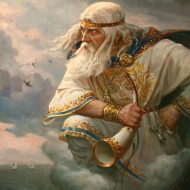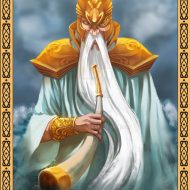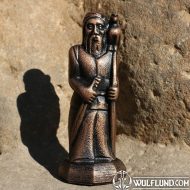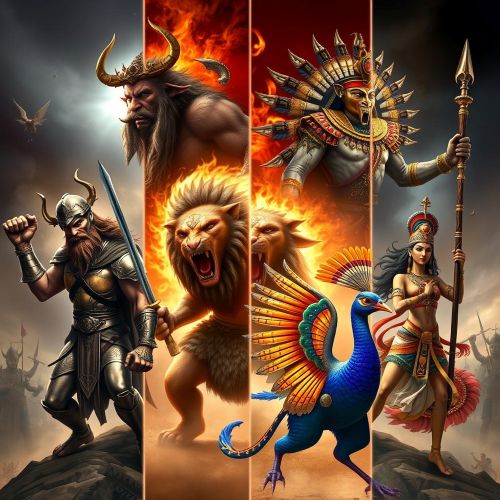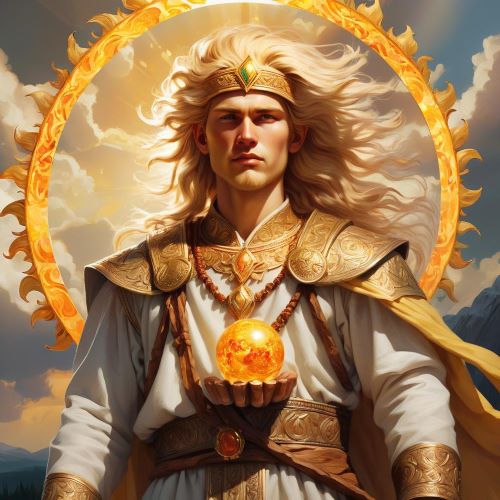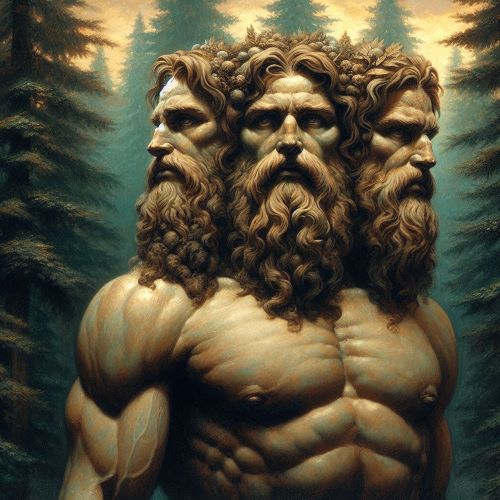Stribog : The Wind God
Listen
At a glance
| Description | |
|---|---|
| Origin | Slavic Mythology |
| Classification | Gods |
| Family Members | All Winds (Sons & Grandsons) |
| Region | Poland |
| Associated With | Storms, Hurricanes, Tornadoes, and Whirlwinds |
Stribog
Introduction
The god of winds known as Stribog was displayed in Kiev, Ukraine, alongside the statues of Horoz, Perun, and Mokosh. Storms and their powerful winds were vital to the agricultural cultures of the Eastern Slavs. Perun was regarded as a fearsome god who could grant justice and strength, while Stribog was known for his ability to bring the winds that carried the rains during thunder.
Because of this connection, Stribog is regarded as a right-hand man to Perun. His powerful winds can cause destruction or friendly gales, and even though thunder rarely comes, his impact is felt whenever it does. Stribog was found in various Slavic mythology sources, and his cult may have existed in Poland. Although these sources do not provide details about the deity’s functions, he is commonly regarded as a wind god who distributes wealth.
Physical Traits
Like many of the other Slavic gods, Stribog appears as an elderly man. He wears long robes, typically white, and holds a great horn to call his grandchildren. He is also pictured among the clouds, sometimes blowing the winds from his mouth.
Family
Stribog’s winds are sent to the sails by his grandsons and sons, and all of them have small breezes. These include the senior wind, which is known as the “Whistling,” and is the God of a storm, while the dry and warm Podaga is a hot dry wind which lives in the dessert. The God of pleasant weather is ironically called Weather and the Southern wind, which is the kind that brings hot weather to the South. The Western wind, which is mostly warm and light, is the “Western wind,” while the cold and powerful Siverko comes from the Northern ocean. The East wind, which is a strange breeze from Asia, is also popular along with the Middday and Midnight wind that is present all day long.
Other Names
Stribog is known in various other names depending on the region that he is being worshipped with the most common one being Strzybog.
Powers and Abilities
As a powerful weather god, Stribog could control the formation and intensity of storms, hurricanes, tornadoes, and whirlwinds that affect Earth’s oceans and seas. He could also disperse the clouds and change the weather, as well as send rays of sunshine to help warm the gardens and fields.
Throughout history, he has been regarded as a powerful destroyer of people’s evil intentions and deeds. He was also known to launch powerful gales and devastating winds. Although he was regarded as a fearsome god, he was rarely recognized by the people.
In folklore, he was known to carry away girls and destroy fields and homes. Since air vortexes were considered dangerous, people who were afraid of flying objects called for help from thunderbolts, which were usually used by those who did not understand atmospheric phenomena. They threw sticks, stones, and knives at him.
Modern Day Influence
Although not as popular as Perun or the other gods in the mythology, Stribog has gained popularity in recent times with the name being given to the SP9 assault rifle and its variants in warfare. The presence of this weapon in numerous first person shooter games and mobile sandbox games have helped revive the mythology behind the wind god around the world.
Related Images
Source
Russian Museum of Ethnography. (n.d.). Slavic Paganism and Its Deities. Retrieved from https://ethnomuseum.ru
National Museum of Slavic Culture. (n.d.). Mythological Representations of Stribog. Retrieved from https://www.slavicmuseum.org
Encyclopedia of Slavic Mythology. (n.d.). Stribog: The Slavic God of Winds and Wealth. Retrieved from https://www.slavicmythology.org
Britannica. (n.d.). Stribog in Slavic Religion. Retrieved from https://www.britannica.com
Toporov, V. N. (1995). Stribog and the Winds in Slavic Mythology. Slavic Mythological Studies Quarterly, 23(2), 89–101.
Jakobson, R. (1952). Mythological Parallels in Slavic Linguistics: The Case of Stribog. International Journal of Slavic Studies, 8(3), 54–72.
Frequently Asked Questions
What is Stribog the god of?
Stribog is the Slavic god of wind, air, and storms, representing the powerful and unpredictable forces of nature. He is often referred to as the grandfather of the winds, overseeing their movements and directions. Stribog is also linked to change and fortune, as winds were thought to carry prosperity across the land. His presence embodies both the nurturing and destructive aspects of natural elements. Ancient Slavs revered him as a symbol of nature’s power and its influence on daily life.
Who is the Slavic god of air?
The Slavic god of air is Stribog. He is associated with the winds, air, and storms, often referred to as the “grandfather of the winds” in Slavic mythology. Stribog governs the movement of air and is believed to bring change, fortune, or destruction through the winds. His role highlights the importance of natural elements in Slavic culture and spirituality.
Who is Stribog?
Stribog is a prominent deity in Slavic mythology, known as the god of wind, air, and storms. Often referred to as the “grandfather of the winds,” he is believed to govern all the winds that sweep across the earth, symbolizing the natural forces that bring change, fortune, or hardship. Stribog’s role reflects the ancient Slavs’ reverence for nature, as the winds were seen as carriers of seeds, prosperity, and sometimes destruction.
How did ancient Slavic people worship Stribog?
Ancient Slavic people worshiped Stribog at sacred sites near rivers and seas. They believed that he controlled the weather and natural phenomena, so they prayed to him for favorable conditions for farming and sailing. Rituals often included offerings and sacrifices to gain his favor and ensure successful winds and bountiful harvests.
What are the main attributes and symbols associated with Stribog?
Stribog, the Slavic god of wind, storms, and air, is often depicted as a tall, thin old man with wings, gray hair, and a long beard. He carries a bow and arrows, symbolizing his control over the wind. His arrows are swift and powerful, like the wind itself. Stribog is also associated with a bird named Stratim, which serves him.


